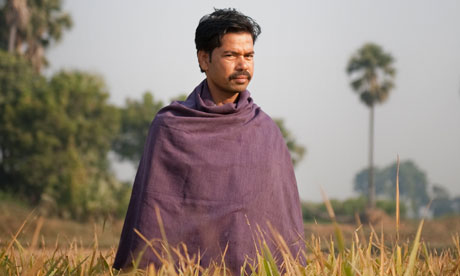This was not six or even 10 or 20 tonnes. Kumar, a shy young farmer in
Nalanda district of India's poorest state Bihar, had – using only
farmyard manure and without any herbicides – grown an astonishing 22.4
tonnes of rice on one hectare (2.5 acres) of land. This was a world record and with
rice the staple food of more than half the world's population of seven billion, big news.
That might have been the end of the story had Sumant's friend Nitish not
smashed the world record for growing potatoes six months later. Shortly
after Ravindra Kumar, a small farmer from a nearby Bihari village,
broke the Indian record for growing wheat. Darveshpura became known as
India's "miracle village", Nalanda became famous and teams of
scientists, development groups, farmers, civil servants and politicians
all descended to discover its secret.
The reason for the "super yields" is entirely down to a method of
growing crops called System of Rice (or root) Intensification (SRI). It
has dramatically increased yields with wheat, potatoes, sugar cane,
yams, tomatoes, garlic, aubergine and many other crops and is being
hailed as one of the most significant developments of the past 50 years
for the world's 500 million small-scale farmers and the two billion
people who depend on them.
Instead of planting three-week-old rice seedlings in clumps of three or
four in waterlogged fields, as rice farmers around the world
traditionally do, the Darveshpura farmers carefully nurture only half as
many seeds, and then transplant the young plants into fields, one by
one, when much younger. Additionally, they space them at 25cm intervals
in a grid pattern, keep the soil much drier and carefully weed around
the plants to allow air to their roots.
SRI's origins go back to the 1980s in Madagascar
where Henri de Laulanie, a French Jesuit priest and agronomist,
observed how villagers grew rice in the uplands. He developed the method
but it was an American, professor Norman Uphoff, director of the International Institute for Food, Agriculture and Development at Cornell University, who was largely responsible for spreading the word about De Laulanie's work.
Given $15m by an anonymous billionaire to research sustainable development,
Uphoff went to Madagascar in 1983 and saw the success of SRI for
himself: farmers whose previous yields averaged two tonnes per hectare
were harvesting eight tonnes. In 1997 he started to actively promote SRI
in Asia, where more than 600 million people are malnourished.
From the Guardian
http://www.guardian.co.uk/global-development/2013/feb/16/india-rice-farmers-revolution#_

No comments:
Post a Comment